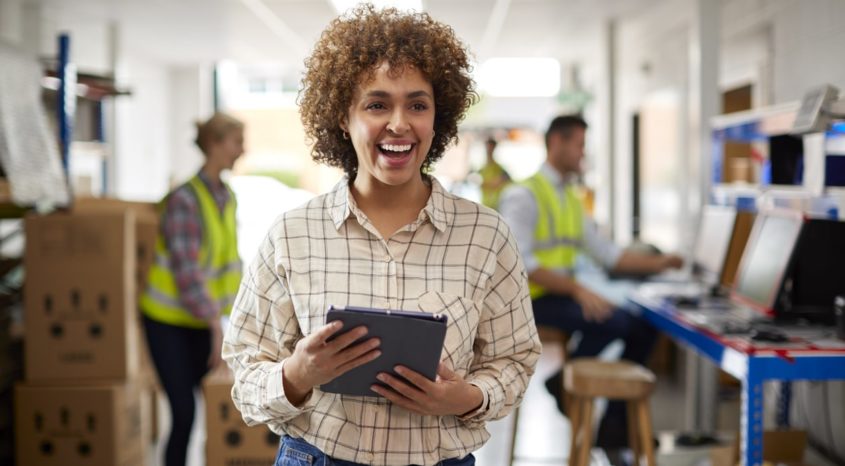Believe it or not, it’s already time to begin mapping out your retail strategy for 2019.
Of course, it’s challenging to talk about retail strategy without also touching on how you are working to modernize your operation in the New Year – especially when so much of what determines your retail success these days comes down to how well (and how quickly) you innovate compared to the competition.
With that said, the technology options can seem limitless as a retailer and – with so many different solutions to choose from – it can be a challenge to know how to innovate and which solutions would be a good fit for your business.
To help, consider the following five strategies to help your retail business stay on the cutting edge of innovation going into the New Year.
#1. Base Staffing Decisions on Store Traffic Counts
It has never been easier to minimize overstaffing and understaffing, as well as reduce unnecessary billable hours by monitoring your in-store foot traffic. A wide range of solution providers are dedicated to helping retailers do this automatically – including Dor, Legion, and IBM Pulse – among others. In addition to monitoring foot traffic for staffing reasons, these platforms can also help stores evaluate overall employee performance, while some can even forecast the impact of weather-related events and how they impact store traffic and sales. In fact, a report by Mobile Marketer identified that when Subway worked with IBM’s Pulse, they boosted store traffic by 31 percent and achieved a 53 percent reduction in campaign waste by making its ads more relevant to weather fluctuations.
#2. Empower Employees Through Engagement Technology
To engage clientele successfully in today’s retail world, you need the right tools. After all, modern customers are omnichannel shoppers, which means associates need the ability to communicate with customers from an omnichannel perspective. Employees also need instant access to customer data that might allow them to better serve each customer through their in-store interactions – such as data on past purchases, customer service inquiries, sample history, associates interacted with, etc. – ultimately helping to drive more sales to their stores. Platforms such as Salesfloor, for example, allow employees to do all of this and more from their own phones – empowering employees to stay better connected to their customers while also monitoring customer engagement on every platform along the way. The best part? Retailers can track this engagement and identify just how beneficial it is for their business… all while driving more sales to their stores.
#3. Help Customers Find Products With Artificial Intelligence
It should come as no surprise that artificial intelligence is reshaping the face of retail. From simple chatbots to H&M’s smart mirrors, AI is quickly becoming a staple for retailers of all sizes and revenue levels. In fact, it’s reported that 45 percent of retailers will use AI by 2020 and many retailers are already using AI to gain a better understanding of their customers, offer personalized customer service at scale, and to create more exciting, dynamic shopping experiences. One of the most exciting examples of AI at work is Neiman Marcus’s Snap.Find.Shop. app, which finds the same or similar products for customers when they upload photos of apparel, accessories, or shoes they love to this app. Thanks to AI, customers then gain a style match delivered by the app courtesy of Neiman Marcus. This modern customer support is becoming more and more the norm of customer expectations – yet without AI, retailers would not be able to deliver on these customer demands. The question remains, however, how are you welcoming AI to help your unique business?
#4. Strengthen Customer Engagement With In-Store Displays
In-store displays aren’t what they used to be…and that’s a good thing for retailers and customers alike. Cardboard cutouts are out of the picture and instead are being replaced with smart billboards, interactive displays and even holographic assistants, such as the ones that footwear retailer Wheelys offers in their stores. Interactive displays can not only assist customers in their purchasing journeys but also engage customers in their shopping experiences, as well, which is an important part of the path to purchase nowadays. No longer do customers just want to be assisted but they also want to be entertained, so consider how in-store displays can help do this with your unique target market.
#5. Offer Faster Payments for Easier Checkout
A fast and frictionless checkout process is expected by customers in today’s competitive market – whether you want to face this reality or not. The reality is, payments are increasingly coming to be viewed as a critical part of the customer experience and thus, retailers need to make this a priority in their sales and marketing efforts alike. Keeping this in mind, Creditcards.com reports that person-to-person electronic payments – such as Venmo, PayPal, etc. – are on the rise because they are seen as “less annoying” than other checkout options.
Conclusion
Finally, remember that any retail innovation you implement in your store should ultimately help your business to run more smoothly. Use functionality as your barometer for success and keep an open mind when you evaluate whether the latest technologies might be right for your retail audience… or not. Plus, don’t forget to enjoy the process along the way. Innovation in retail is exciting, but it’s only exciting if it benefits your retail store, so never lose sight of this retail reality, as well.




